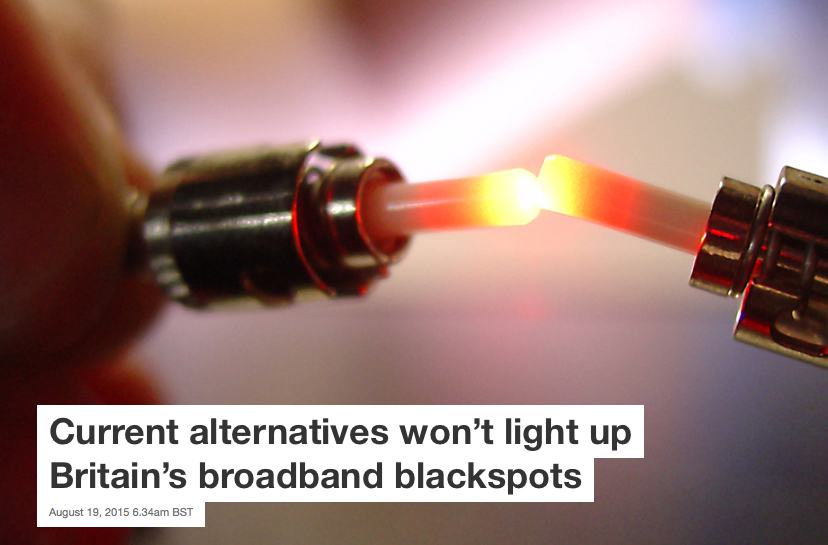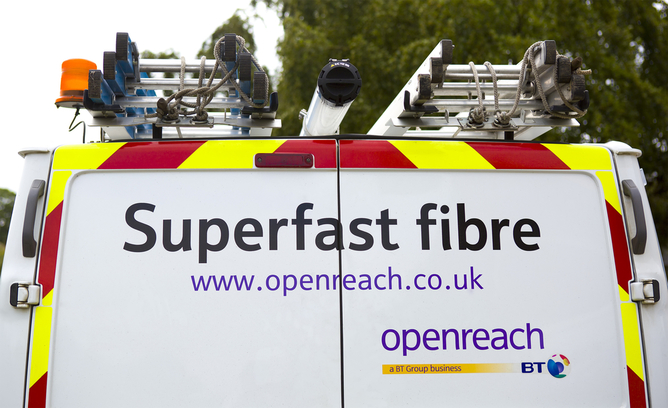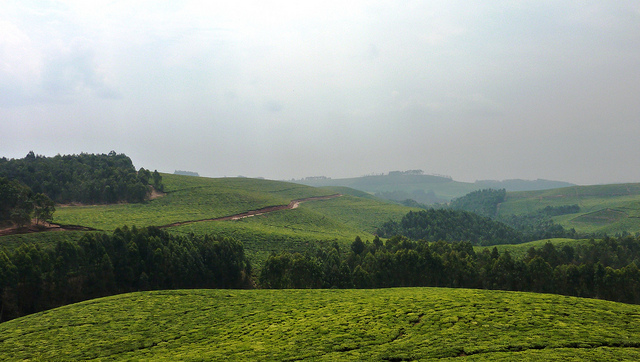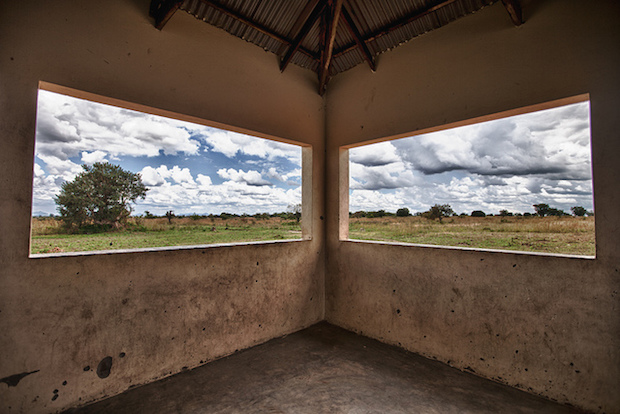Satellites, microwaves, radio towers – how many more options must be tried before the government just shells out for fibre to the home? Reposted from The Conversation.
Despite the British government’s boasts of the steady roll-out of superfast broadband to more than four out of five homes and businesses, you needn’t be a statistician to realise that this means one out of five are still unconnected. In fact, the recent story about a farmer who was so incensed by his slow broadband that he built his own 4G mast in a field to replace it shows that for much of the country, little has improved.
The government’s Broadband Delivery UK (BDUK) programme claims that it will provide internet access of at least 24 Mbps (megabits per second) to 95% of the country by 2017 through fibre to the cabinet, where fast fibre optic networks connect BT’s exchanges to street cabinets dotted around towns and villages. The final connection to the home comes via traditional (slower) copper cables.
Those in rural communities are understandably sceptical of the government’s “huge achievement”, arguing that only a fraction of the properties included in the government’s running total can achieve reasonable broadband speeds, as signals drop off quickly with distance from BT’s street cabinets. Millions of people are still struggling to achieve even basic broadband, and not necessarily just in the remote countryside, but in urban areas such as Redditch, Lancaster and even Pimlico in central London.
Four problems to solve

Our research found four recurring problems: connection speeds, latency, contention ratios, and reliability.
Getting high-speed ADSL broadband delivered over existing copper cables is not possible in many areas, as the distance from the exchange or the street cabinet is so far that the broadband signal degrades and speeds drop. Minimum speed requirements are rising as the volume of data we use increases, so such slow connections will become more and more frustrating.
But speed is not the only limiting factor. Network delay, known as latency, can be as frustrating as it forces the user to wait for data to arrive or to be assembled into the right order to be processed. Most of our interviewees had high latency connections.
Many home users also suffer from high contention, where a connection slows as more users in the vicinity log on – for example, during evenings after work and at weekends. One respondent pointed out that the two or three large companies in the neighbouring village carried out their daily company backups between 6.30pm-8.30pm. This was obvious, he said, because during that time internet speeds “drop off the end of a cliff”.
Connection reliability is also a problem, with connections failing randomly for no clear reason, or due to weather such as heavy rain, snow or wind – not very helpful in Britain.
Three band-aid solutions
With delivery by copper cable proving inadequate for many, other alternatives have been suggested to fill the gaps.
Mobile phones are now ubiquitous devices, and mobile phone networks cover a huge proportion of the country. A 4G mobile network connection could potentially provide 100Mbps speeds. Unfortunately, the areas failed by poor fixed line broadband provision are often the same areas with poor mobile phone networks – particularly rural areas. While 2G/3G network coverage is better, it is far slower. Without unlimited data plans, users will also face monthly caps on use as part of their contract. Weather conditions can also adversely affect the service.
Satellite broadband could be the answer and can provide reasonably high speeds of up to around 20 Mbps. But despite the decent bandwidth available, satellite connections have high latency from the slow speed of transferring data to and from satellites, due to the far larger distances involvedbetween satellites and the ground. High latency connections make it very difficult or impossible to use internet telephony such as Skype, to stream films, video or music, or play online games. It’s not really an option in mountainous regions, and is a more expensive option.
A third alternative is to use fixed wireless, relaying broadband signals over radio transmitters to cover the distance from where BT’s fixed-line fibre optic network ends. These services generally provide 20Mbps, low latency connections. However, radio towers require line-of-sight access which could be a problem given obstructions from hills or woods – factors that, again, limit use where it’s most needed.
The only one that fits
All these alternatives tend to be more expensive to set up and run, come with more strict data limits, and can be affected by atmospheric conditions such as rain, wind or fog. The only true superior alternative to fibre to the cabinet is to provide fibre to the home (FTTH), in which the last vestiges of the original copper telephone network are replaced with high-speed fibre optic right to the door of the home or business premises. Fibre optic is faster, can carry signals without loss over greater distances, and is more upgradable than copper. A true fibre optic solution would future-proof Britain’s internet access network for decades to come.
Despite its expense, it is the only solution for many rural communities, which is why some have organised to provide it for themselves, such as B4RN and B4YS in the north of England, and B4RDS in the southwest. But this requires a group of volunteers with knowledge, financial means, and the necessary dedication to lay the infrastructure that could offer a 1,000 Mbps service regardless of line distance and location – which won’t be an option for all.









